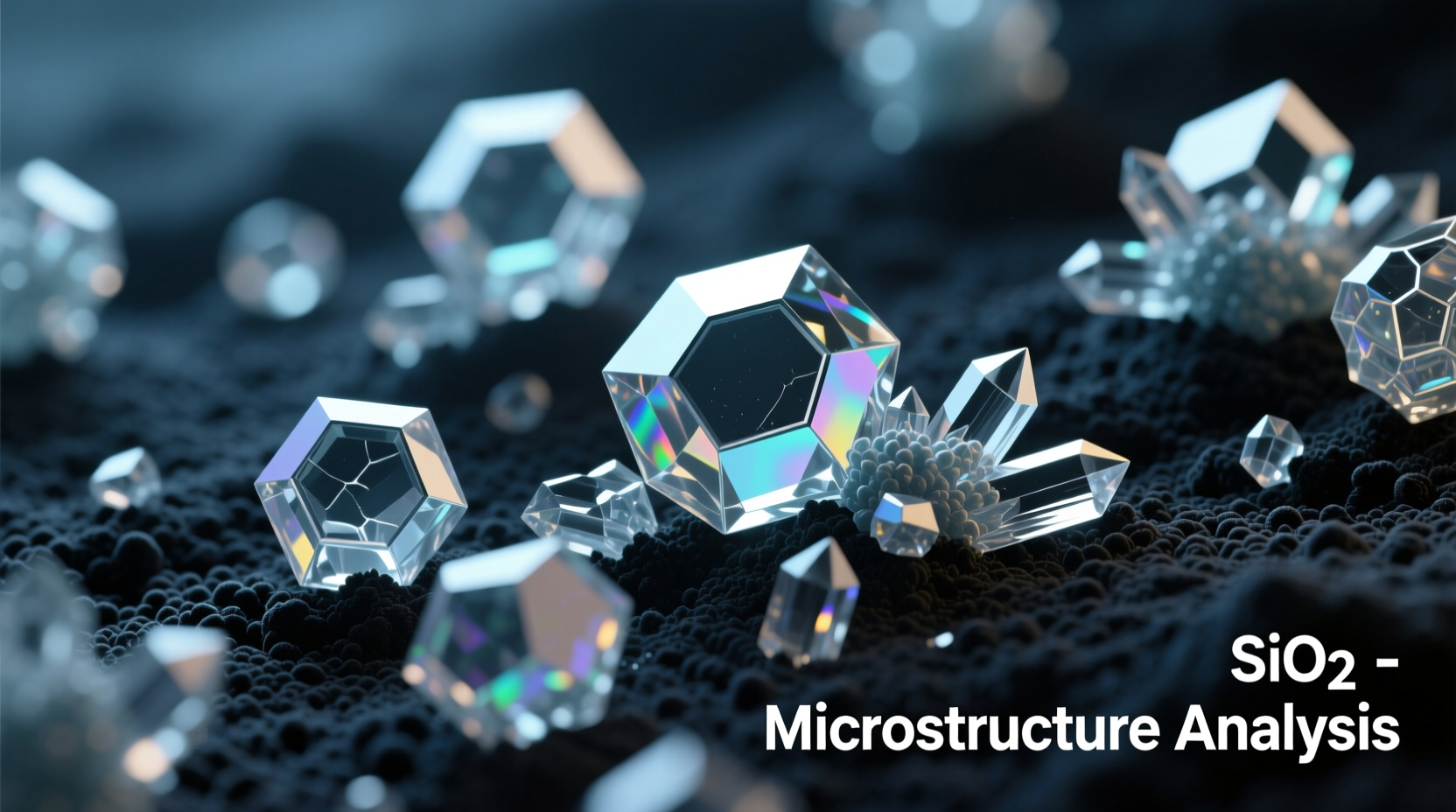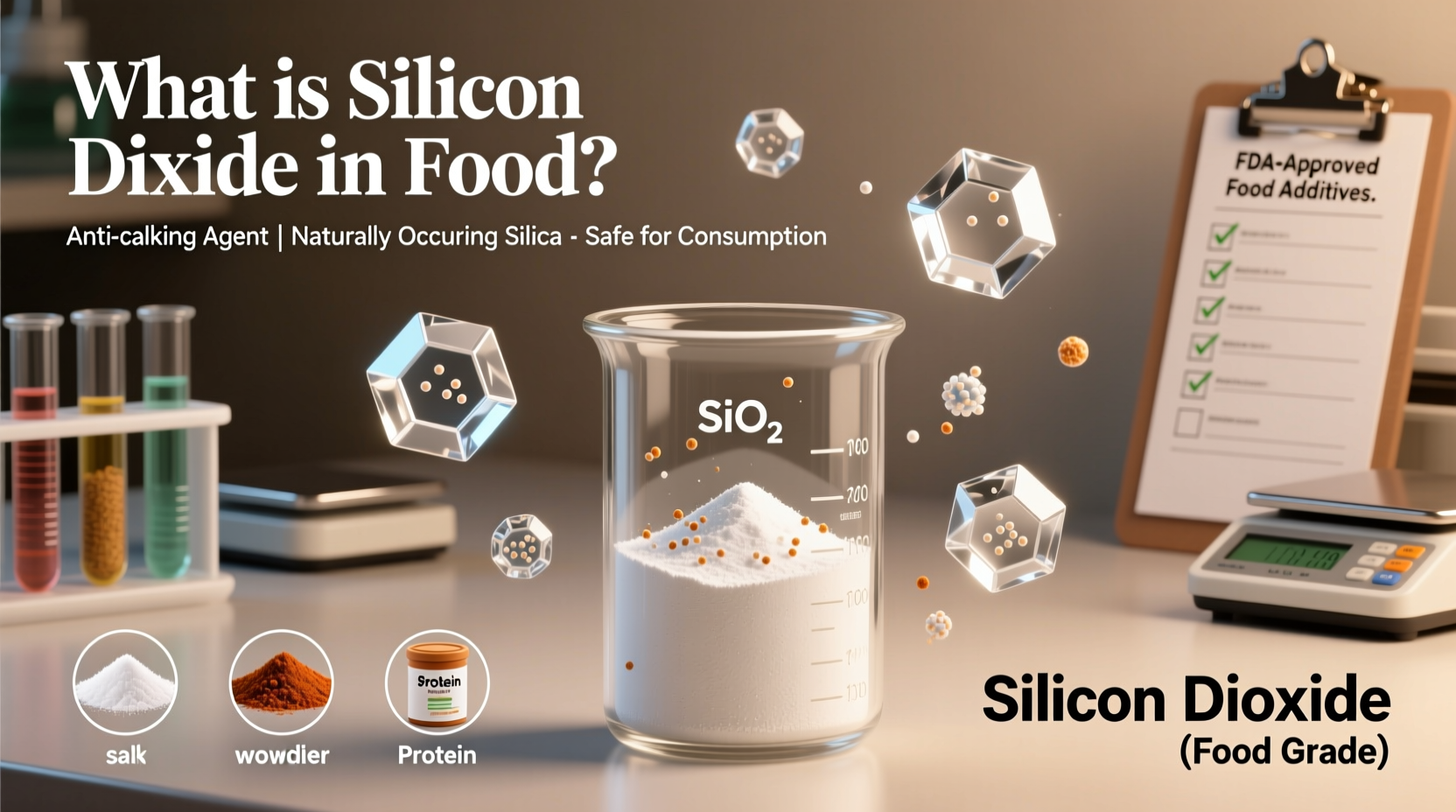Why Food Manufacturers Rely on Silicon Dioxide
When you shake salt from a shaker or stir instant coffee, you're experiencing silicon dioxide's work. This mineral compound—found naturally in quartz and beach sand—gets purified for food use to solve a universal problem: moisture-induced clumping. Food scientists call it an anti-caking agent, but consumers know it as the reason your powdered ingredients flow smoothly.
Unlike synthetic additives, silicon dioxide (E551 on European labels) mirrors what exists in nature. The FDA recognizes it as safe (GRAS) at concentrations up to 2% in foods. Major applications include:
- Preventing spice blends from hardening in shakers
- Keeping powdered supplements free-flowing
- Stopping instant soup mixes from forming lumps
- Maintaining texture in non-dairy creamers
How Silicon Dioxide Works at the Molecular Level
Silicon dioxide's effectiveness comes from its microscopic structure. Food-grade versions use amorphous silica—a non-crystalline form with high surface area. When added to powders, these tiny particles (typically 5-50 micrometers) create physical barriers between larger ingredient particles.
"Think of it like marble-sized rocks preventing soccer balls from sticking together," explains food chemist Dr. Alan Carter. "The silica particles absorb ambient moisture while creating air pockets that stop ingredients from fusing." This mechanism works without altering taste, color, or nutritional value—critical for clean-label products.

Safety Profile: What Regulatory Agencies Confirm
Concerns about silicon dioxide often stem from confusion with crystalline silica (a lung irritant in industrial settings). Food applications exclusively use amorphous silica, which multiple agencies confirm as safe:
| Regulatory Body | Approval Status | Maximum Allowance |
|---|---|---|
| U.S. FDA | GRAS since 1973 | 2% in most foods |
| European EFSA | Approved (E551) | 1,500-3,000 mg/kg |
| Joint FAO/WHO Committee | No ADI established | "Acceptable" at GMP levels |
The European Food Safety Authority's 2018 re-evaluation confirmed no safety concerns at current usage levels, noting humans naturally consume 10-50mg daily from water and plant-based foods alone.
Where You'll Find Silicon Dioxide in Your Pantry
This additive appears in products where free-flowing texture matters most. Common examples include:
- Spice blends: Garlic powder, curry mixes, and chili seasoning
- Beverage mixes: Non-dairy creamers, protein shakes, cocoa powder
- Baking essentials: Powdered sugar, cake mixes, baking powder
- Supplements: Vitamin capsules, protein powders, mineral tablets
Reading ingredient labels reveals its placement—typically listed as "silicon dioxide" or "silica" near the end, indicating minimal quantities. Organic products may use alternatives like rice hull extract, but conventional items rely on silicon dioxide for consistent performance.
Addressing Common Consumer Concerns
"Is it really just sand?" Technically yes—but so is window glass. Food-grade silicon dioxide undergoes rigorous purification to remove impurities found in natural sand. The final product meets strict USP Food Ingredients standards.
"Does it accumulate in the body?" Research shows most consumed silica passes through the digestive system unchanged. A 2011 NIH study found no tissue accumulation even at doses 100x typical consumption.
"Are there natural alternatives?" Some brands use calcium silicate or starch derivatives, but these often affect taste or require higher quantities. Silicon dioxide remains preferred for its neutral profile and effectiveness at low concentrations.
When Silicon Dioxide Becomes Necessary
Not all foods need this additive. Its use depends on three critical factors:
- Particle size: Finer powders (like spice blends) require anti-caking agents more than coarse ingredients
- Humidity exposure: Products shipped to tropical climates need higher protection
- Shelf life requirements: Items with 12+ month expiration dates almost always contain anti-caking agents
Manufacturers follow Good Manufacturing Practices (GMP) to use the minimum effective amount. Exceeding 2% would compromise texture without additional benefit—a key reason why overuse is commercially impractical.
Practical Takeaways for Consumers
Silicon dioxide serves a specific technical purpose without health risks at approved levels. If you prefer to minimize additives:
- Choose coarse-ground spices over fine powders
- Store opened spice containers with silica gel packets
- Buy smaller quantities to reduce moisture exposure time
- Opt for whole spices you grind yourself
Remember that avoiding silicon dioxide means accepting trade-offs—clumpy seasonings, shorter shelf life, or alternative additives that may affect flavor. For most consumers, its benefits outweigh negligible risks supported by decades of safe use.











 浙公网安备
33010002000092号
浙公网安备
33010002000092号 浙B2-20120091-4
浙B2-20120091-4